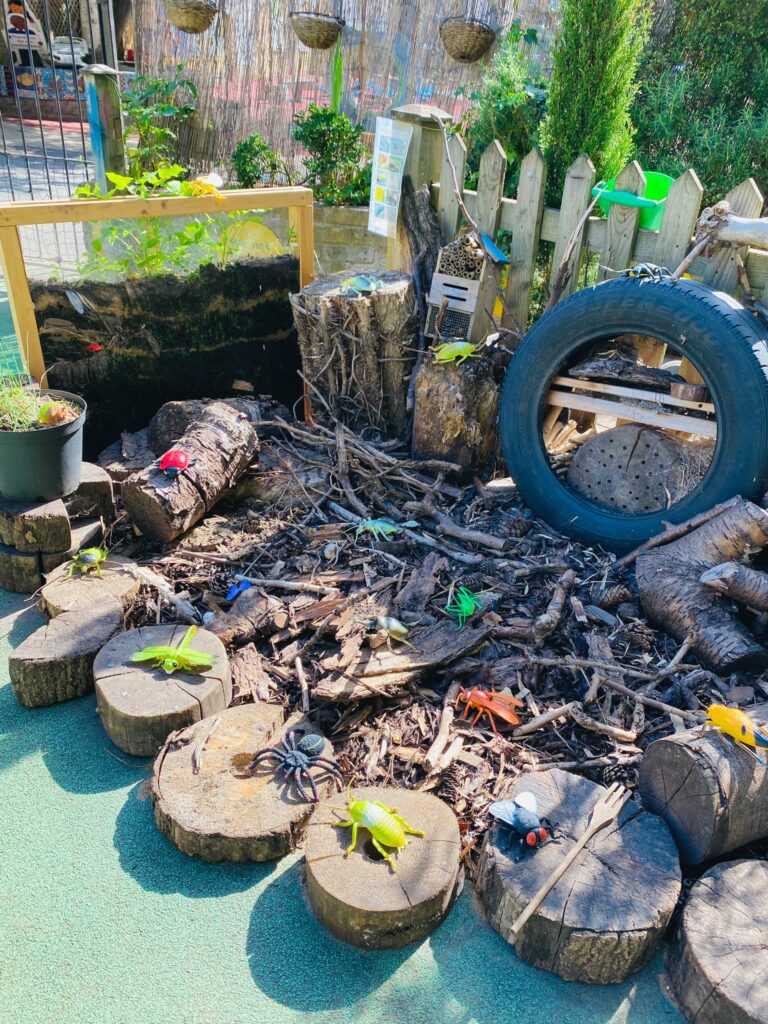Incredible Insects: National Insect Week
Many people dislike insects especially in the summer when we eat outside more. However, there are many reasons to be thankful for insects, here are just a few of those reasons, plus some ways to get involved this week.
This blog post provides you with some free or low cost activities that you can do in your setting. Have fun and I hope you enjoy them.
- Food web - insects feed many fish, birds, reptiles, amphibians, and mammals.
- Bug Control - many insects help to keep others in check. A ladybird can be used to biologically control aphids that feed on crops like tomato plants.
- Pollinators - insects feed on the pollen and nectar they gather, while the fertilized plants are able to form fruit and set seeds.
- Seed dispersal - an alternative method to wind dispersal are insects that disperse the fruit and seeds from plants.
- Waste disposal - insects break down and clean up our waste such as poo, dead plants, and animal bodies then return them to the soil as nutrient-rich organic matter.
Pitfall Trap
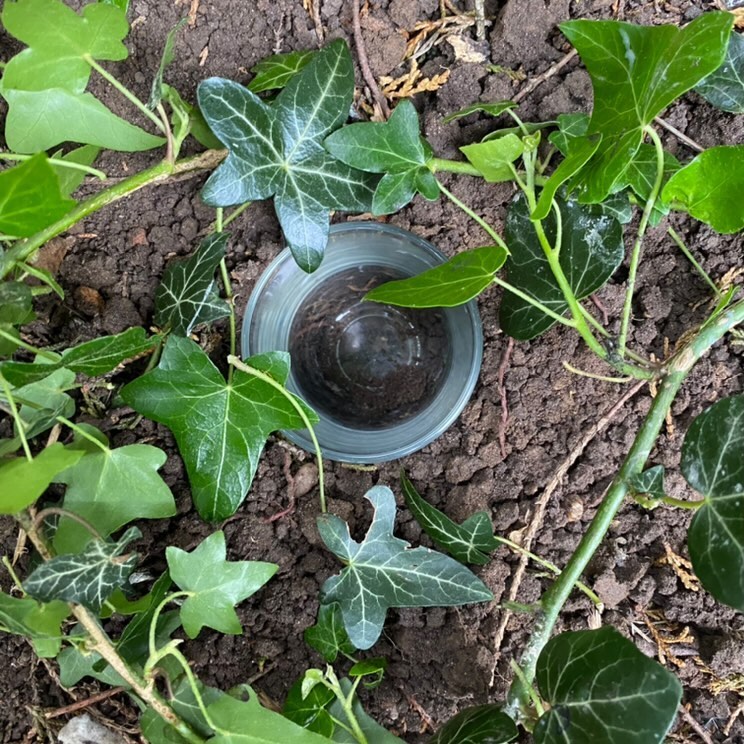
A simple activity involving a cup and a hole in the ground. The idea is to capture and ground bugs that walk along. Then remove to view . We place leaves over the rim to help disguise. This is one of the methods of sampling that we use to teach in science. However my kids loved the idea of the trap.
Butterfly Buffet

We set up a tray of fruit including watermelon, apple and orange to attract butterflies. A simple one again and you can use fruit scraps or fruit you would normally throw.
Blossom Bug Drop
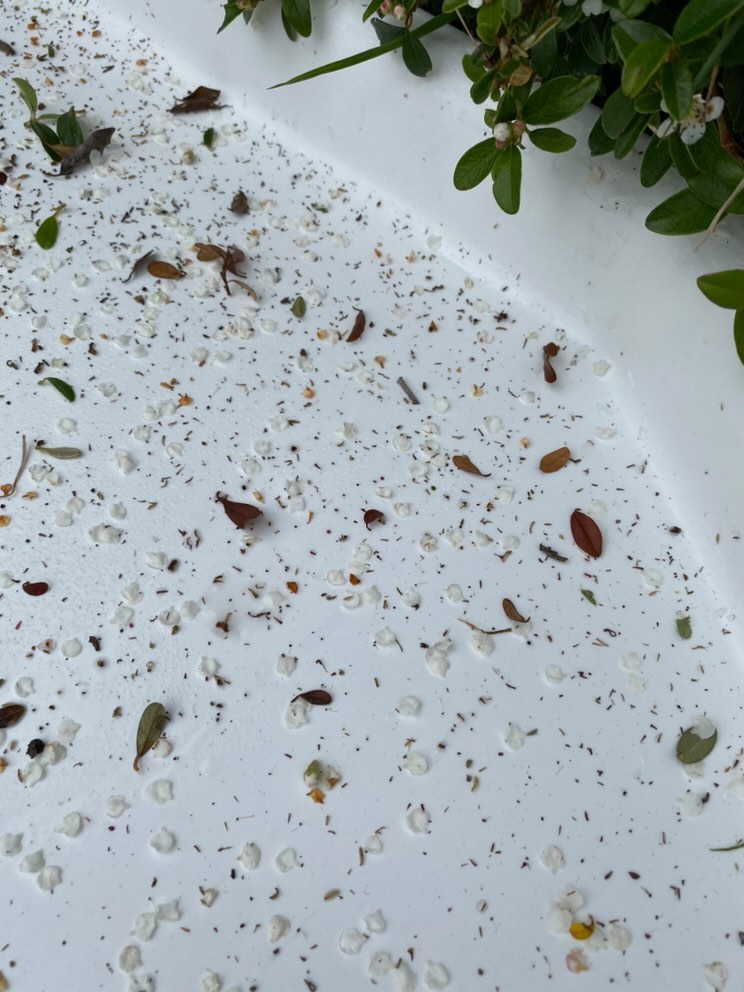
We placed a white tray near a blossoming bush as we didn’t have a tree in the garden. The idea is to observe any insects that fall from the tree. Although we had more of a bush bashing approach to encourage them to fall. We then used diy bug pots and magnifying glasses to get a closer look.
Wandering Woodlice
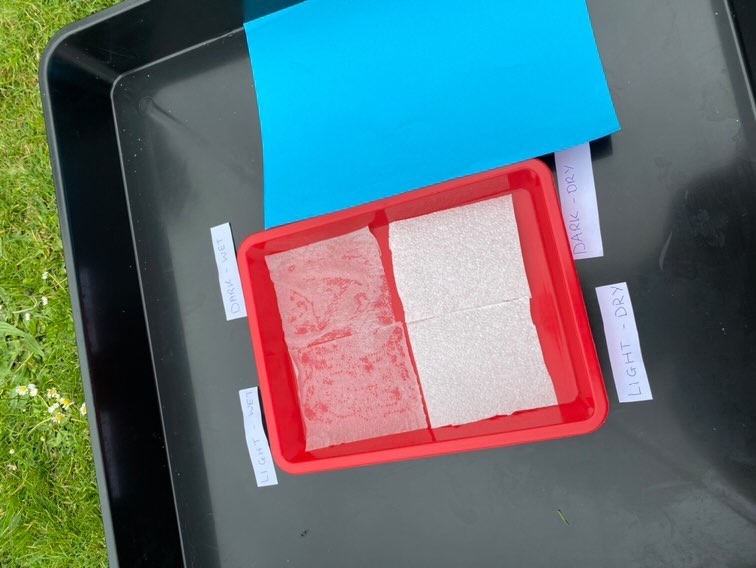
We made a tray to investigate the desired conditions for woodlice. Wet vs Dry and Light vs Dark. We used paper towel so we could make it damp. They should congregate on the wet and dark area although ours didn’t always. This is a fun one to watch and easy to set up. We looked under a bug trapdoor ( which is a slab on the mud) to find woodlice.
Leaf Litter Looking
We collected the remaining leaf litter from our garden and placed it into a tray to watch for bugs , again using the pots and magnifiers. This is a good activity to try earlier in the spring but we still spotted some, mostly spiders, woodlice and other small insects.
Snail Terrarium
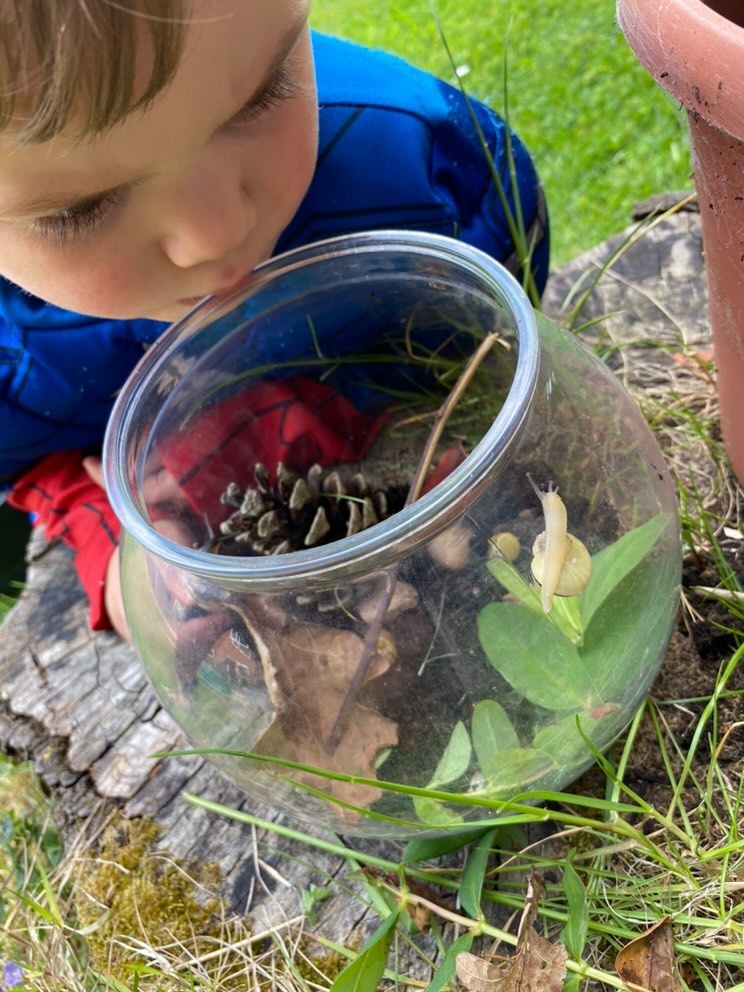
We collected 3-5 snails from under bushes around the garden and made a home for them to view them. We placed some mud, rocks, pinecone , twigs and leaves in a plastic fish bowl but any large jar would do. We placed a sand sieve on top to stop them escaping but allow air in. We placed them in shade and watched them move about. Apparently they eat many types of leaves but it’s a good idea to place leaves found near to the location they were. We looked at the different sizes, colours and patterns on the shells. Another extension of this is to do a snail race .
With thanks to @mylittlebrightsparks for this post
Easy Minibeast Habitats Young Children Can Make
To find out more about making a Minibeasts habitat, you can click the link below to visit our friend- Creative Star.
Click here to read more.
Don’t forget to share your activities with us on our social channels!
Facebook:https://www.facebook.com/cosydirect/
Twitter:https://twitter.com/cosydirect
Instagram:https://www.instagram.com/cosydirect/


